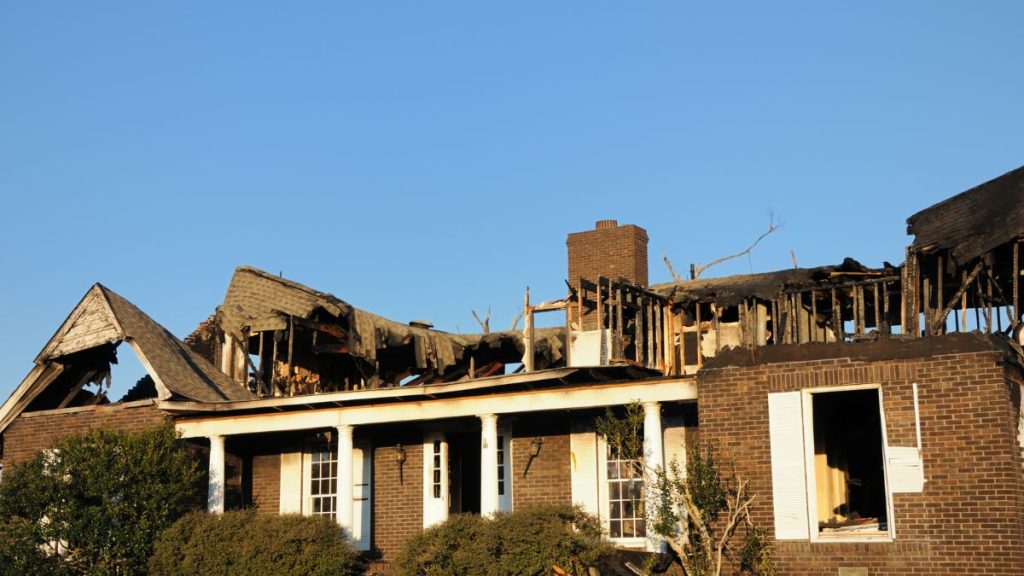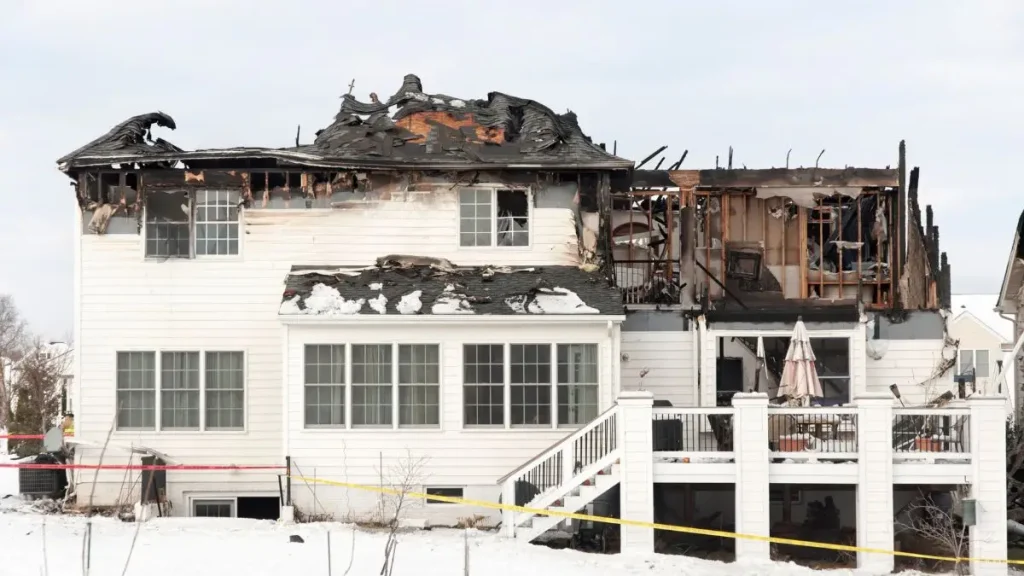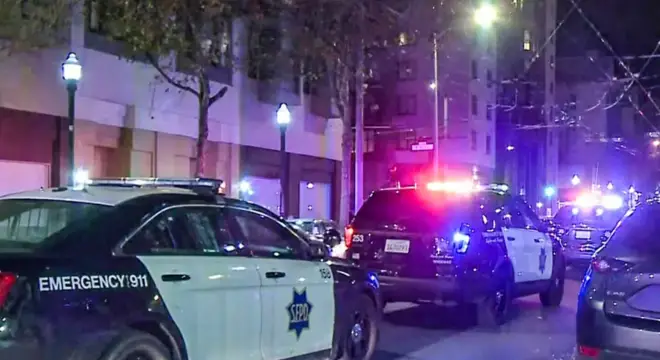Pittsburgh-Area Home Catches Fire with 20,000 Rounds of Ammunition Inside
I’ve covered a lot of house fires over the years, but few start with the kind of gut-punch this one did—gunfire-like pops echoing through a sleepy Pennsylvania neighborhood.
It was just after 8 a.m. in Vandergrift, Westmoreland County. Most people were either getting ready for the day or still enjoying their morning quiet. That’s when Don Cocco, who lives right next door to the now-destroyed home, noticed smoke creeping out from under the eaves. Then came the screams—and then the flames.
“I seen all the smoke in the eaves,” Cocco told local reporters. “The flames were pretty high, and I was scared for my house.” You can’t blame him. Not only was the house right next to his, but it wasn’t just any fire. Inside that burning home were 20,000 rounds of ammunition. And when they started going off, the whole street turned into what sounded like a war zone.
Cocco and his neighbors banged on the door, thinking the woman who lived there might be inside. Thankfully, she pulled into the driveway moments later—just as flames were bursting through the side air conditioner. It was a close call, the kind that leaves your hands shaking even long after it’s over.
Have you ever thought about what might be sitting in your own home during a fire? Let me know your thoughts in the comments—because this incident is a wake-up call not just for this one block in Vandergrift, but for all of us.
Firefighters vs. Firepower: Ammo Starts Exploding Mid-Rescue
I’ve seen fires where timing makes all the difference—but this one added a whole new layer of danger. The first fire crews arrived quickly after neighbors called 911. They rushed in to do what they always do—try to save lives and stop the fire from spreading.
But then came the blasts.
Chief Randy Dunmire and his crew didn’t know what they were stepping into at first. Moments after entering, they started hearing loud pops, one after another. That’s when it hit them—the house wasn’t just burning. Thousands of bullets were exploding from inside.
Dunmire immediately pulled the team back. It wasn’t safe. Even though the bullets didn’t have the force of a fired gun—because they weren’t coming from a barrel—the raw energy from the gunpowder was still enough to injure someone. Some casings were later found half a block away.
The fire crews switched to a defensive strategy. For 30 tense minutes, they attacked the fire from the outside, waiting for the ammo blasts to stop. They set a rule—if no pops were heard for 10 straight minutes, then it was safe to go back in.
If you’ve ever wondered what real courage looks like, that was it. Standing there, with bullets flying through fire and smoke, and still finding a way to stop the flames from spreading to nearby homes.
“It Was Constant Pops”: What Neighbors Witnessed and Feared
Imagine stepping outside your front door to what sounds like a shootout—but it’s actually a house fire. That’s exactly what neighbors in Vandergrift went through.
“I give all the credit in the world to the fire departments,” Don Cocco said. “Unbelievable job they did.”
His interview with CBS Pittsburgh paints the full picture. You can read their coverage here. He described the sound as “constant pops,” like fireworks, except you knew it wasn’t a celebration. It was someone’s home going up in flames—with thousands of rounds of live ammunition inside.
It’s easy to think, “That wouldn’t happen on my street.” But you and I both know—fires don’t care about ZIP codes. And in moments like this, even the best-trained firefighters are forced to step back and recalculate.
You can feel the fear in every word Cocco shared. One moment he was knocking on his neighbor’s door, thinking she might be trapped. The next, he was worrying about whether his own home would catch fire from the flames just feet away.
Have you ever witnessed a fire this close to home—or even just heard something similar in your neighborhood? Drop your thoughts in the comments. Stories like these remind us how quickly things can change.
Inside the Ammo Cache: What 20,000 Stored Rounds Can Do in a Fire
Let me break something down clearly—ammunition doesn’t need a gun to become dangerous in a fire.
When ammo is exposed to heat, the gunpowder inside burns fast. It doesn’t fire a bullet the same way a gun does, but the casing and fragments can fly with enough force to hurt someone—or worse.
That’s exactly what happened here. According to Chief Dunmire, the rounds weren’t firing with deadly precision, but they were “flying around some.” In plain terms: hot metal shooting unpredictably through the air. That’s enough to make any firefighter hesitate—and rightly so.
And this isn’t the first time something like this has happened. In East Huntingdon just a year or two ago, another Pennsylvania home fire involved stored ammo. The difference? No one had 20,000 rounds sitting under one roof.
If you store ammunition at home—even just a couple boxes—you need to understand the risks during a fire. This case wasn’t about illegal weapons or criminal intent. It was about someone storing a large amount of ammo in a regular residential space… and what happens when fire finds it first.
A similar outcome was seen when Cincinnati firefighters quickly contained an early morning blaze before it spread to nearby homes—speed often makes all the difference.
What Caused the Fire? Here’s What Officials Know So Far

You’re probably wondering—how did this all start?
Right now, the cause isn’t confirmed, but Fire Chief Dunmire told reporters it appears to have been accidental. Investigators from the State Fire Marshal’s office are involved, and a full report will likely take weeks. That’s typical when ammo is involved—it complicates everything.
What we do know is this: the house is a total loss.
Some firearms were recovered, but many were destroyed in the fire. Firefighters had to rip through walls and ceilings manually to fully knock down the blaze. It was hours of dangerous, exhausting work in a house full of heat, smoke, and ammunition residue.
You and I might take for granted that a fire department will always show up and “take care of it.” But behind the scenes, situations like this aren’t routine—they’re unpredictable and life-threatening.
This kind of uncertainty isn’t rare—a Nevada home that caught fire overnight is still under review weeks later, highlighting how tough these investigations can be.
Is It Legal to Store 20,000 Rounds in a PA Home?
Now here’s a question most people aren’t asking—but should be.
Is it even legal to keep 20,000 rounds of ammunition in your house in Pennsylvania?
Surprisingly, in most parts of the state, there are no specific limits on how much ammo you can store in your own home—at least not at the state level. However, local fire codes or city ordinances may vary. And if you’re living in a multi-family building or close-quarters neighborhood, those risks multiply.
From a legal standpoint, unless you’re violating storage laws (like keeping black powder in unsafe conditions), you’re not automatically doing anything wrong. But from an insurance or fire safety angle? That’s a different story.
Homeowners insurance often includes fine print about “hazardous materials” or “excessive munitions” that could void parts of a claim. And if your house catches fire—and contributes to the spread or injury—there could be civil or criminal liability depending on the situation.
In other words: just because it’s legal doesn’t mean it’s safe. Or smart.
In a similar close-call situation, a neighbor in New Jersey risked his life to save a woman trapped in her burning home, showing just how fast decisions must be made in moments like these.
What Firefighters Wish You Knew About Hidden Dangers in Homes?
Let me be real with you—this kind of fire is every firefighter’s nightmare. Not just because of the flames, but because of what they don’t know when they enter a home.
Chief Dunmire and his team didn’t have advance warning that 20,000 rounds of ammo were stored inside that house. They found out the hard way—when the popping started.
And that’s the lesson.
If you’re storing ammunition, fireworks, propane, or any kind of hazardous material at home, it’s not enough to just keep it in a closet. Firefighters need to know. You don’t have to post a sign on your front door, but you can contact your local fire department and let them know what they might be walking into during an emergency.
In my experience, most people don’t think of their homes as dangerous. But I’ve seen blazes made worse by:
- Old space heaters
- Gasoline in the garage
- Hoarded paper or cardboard
- Firearms and ammo in unsecured areas
Homeowners often exchange safety tips and real-life fire lessons in community WhatsApp channels—sometimes those small conversations make the biggest difference. If you’re part of one, share this story there. And if not, you might want to start following one that regularly shares practical tips and daily safety updates.
Could This Happen in Your Neighborhood? Lessons for Pennsylvania Homeowners

Here’s the part you can’t afford to skip—because this isn’t just Vandergrift’s story. It’s yours and mine too.
You might not have 20,000 rounds of ammo at home. But maybe you’ve got a box or two in a closet. Or a propane tank in your garage. Or wires in the attic that haven’t been checked in years. That’s how these fires start—quietly, until they don’t.
Here’s what you can do right now:
- Store ammunition in a fire-safe, lockable container (preferably not in your living space)
- Don’t overload outlets or run cords under rugs
- Keep fire extinguishers on every floor
- Make sure smoke alarms are working (and not 10 years old)
- Tell your local fire department about any unusual risks—especially if you store flammable or explosive items
I’ve talked to more homeowners than I can count who said the same thing after a fire: “I never thought it could happen to me.”
But the truth is—it always starts with someone who thought that.
The Fire Was Contained—But the Risk Isn’t Over
The woman whose home burned down survived. Her neighbors are safe. The fire was put out. But the question still hangs in the air:
What if she had been inside? What if the wind had shifted? What if the crews had waited five minutes longer?
You and I can’t undo what happened in Vandergrift. But we can take a hard look at our own homes. Our habits. Our blind spots.
This wasn’t just a fire. It was a warning.
For more real-world fire stories and safety coverage, visit our Home Incidents section and see how other neighborhoods across the country are being impacted.
Disclaimer: This article is for informational purposes only and does not constitute fire safety, legal, or insurance advice. Always consult with local authorities or certified professionals for guidance on hazardous materials storage. The information is based on publicly available reports at the time of writing.


